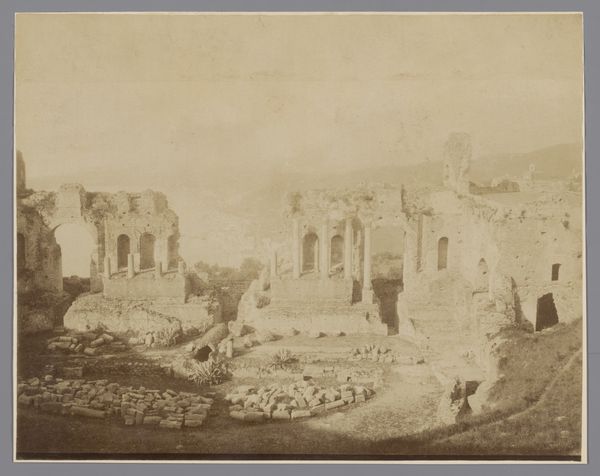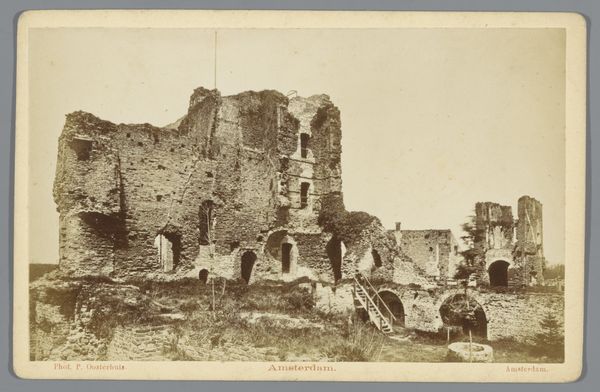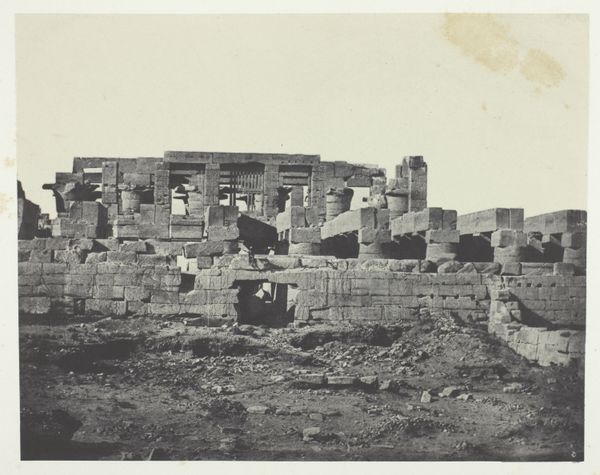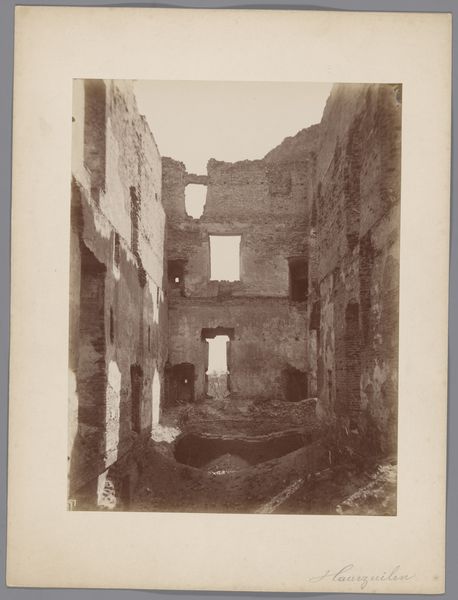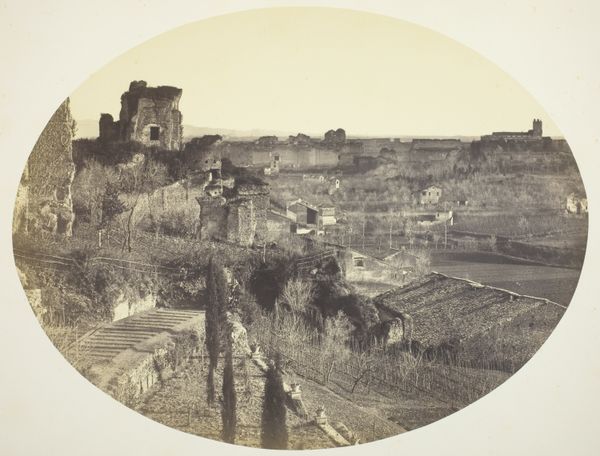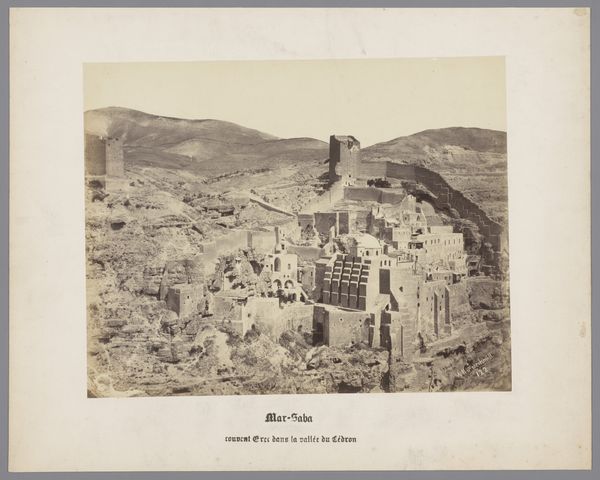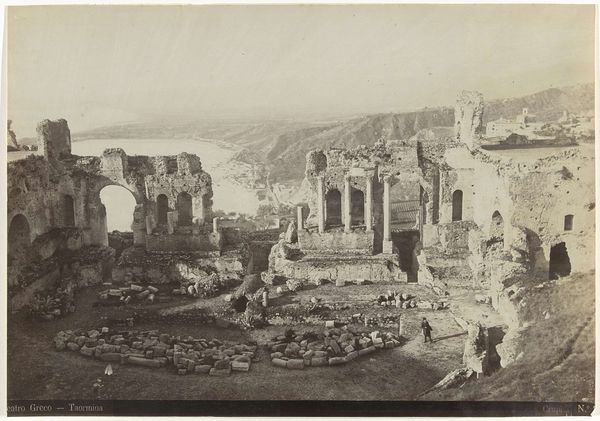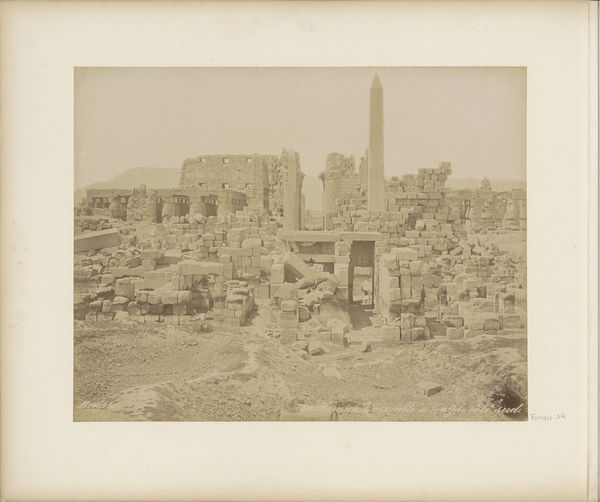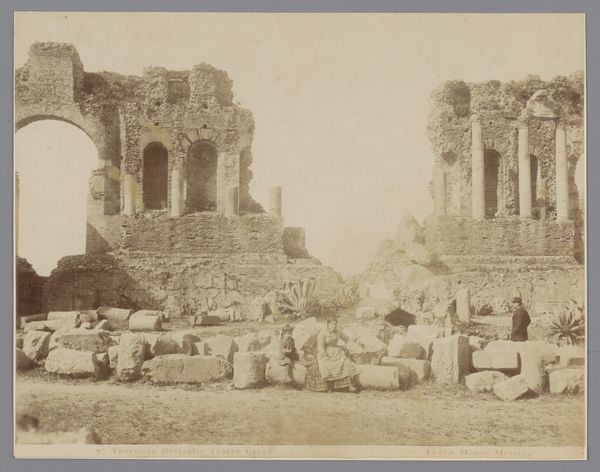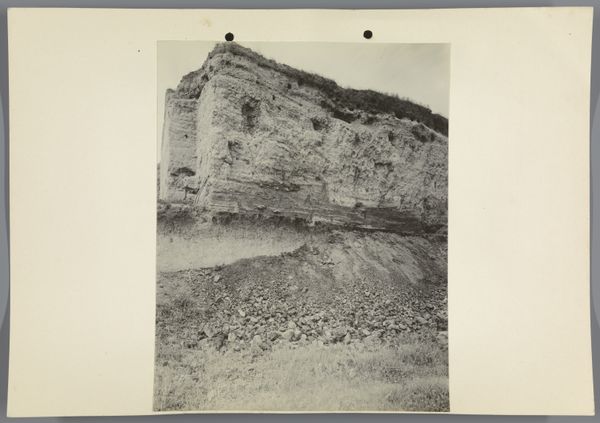
#
photo of handprinted image
#
aged paper
#
toned paper
#
homemade paper
#
muted colour palette
#
ink paper printed
#
sketch book
#
personal sketchbook
#
watercolour illustration
#
watercolor
Dimensions: height 359 mm, width 552 mm
Copyright: Rijks Museum: Open Domain
Curator: Giorgio Sommer's "Gezicht op het Griekse theater van Taormina, Sicilië," created sometime between 1857 and 1914, offers a poignant perspective on history, quite literally. It's a photograph of a hand-printed image, seemingly captured on toned paper. Editor: The overwhelming impression is one of melancholy. The muted colors lend a somber air. The decaying architecture suggests a world in decline, doesn't it? I find myself thinking about Romanticism and its fascination with ruins. Curator: Absolutely. The romanticization of ruins ties directly to the burgeoning sense of nationalism sweeping through Europe at that time. These images, circulated widely, invoked a sense of shared heritage and a yearning for a glorious past that could inform the present—often idealizing that past in problematic ways, of course, overlooking social hierarchies. Editor: The composition draws the eye directly to the heart of the amphitheater. Notice how the lines of the remaining structures subtly guide your gaze. Sommer is intentionally creating depth through tonal contrast. Curator: Precisely. Sommer was not only recording a visual scene; he was actively constructing a narrative, participating in the creation of collective memory. We need to remember that this wasn't just about aesthetic appreciation, but also about how the photograph could be deployed within imperial and colonial frameworks to enforce power relations and assert a Western gaze. Editor: Even the type of paper adds to its depth, and this piece certainly looks like aged paper. There is almost a ghostly haze that veils the image and adds to its sense of bygone eras. It feels simultaneously immediate and distant, doesn’t it? A semiotic interplay between signifier and signified, the ruins functioning as signs loaded with historical baggage. Curator: Exactly. The ruins symbolize both cultural achievement and also the transient nature of power. By carefully constructing the visual rhetoric of decline, these photographs helped frame discourses about civilization and its fate, frequently with disturbing implications for contemporary society and ongoing colonialism. Editor: Looking at the photo in this way reveals the image as a site of multiple overlapping discourses, challenging the viewer to unpack its complexities, revealing so much beyond an objective recording. Curator: And precisely why engaging with images such as this can foster important, albeit challenging, dialogue about identity, representation, and the lasting impact of historical power structures on art.
Comments
No comments
Be the first to comment and join the conversation on the ultimate creative platform.
